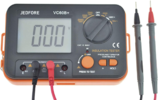Hello,
Recently moved house, everything was fine for 1 a month or so. One morning I woke up to no electricity, narrowed the issue down to the sockets at the consumer unit, following this I unplugged all appliances and tried flipping the switch back to no avail, last area in the house was the conservatory - This has a fused spur and 3 double sockets, upon removing the fuse and trying the switch at the consumer unit everything stayed on.
I've had the sockets off, checked all the wiring for damage / loose connections and everything looks fine. When I popped the fused back in the electricity stayed on for 10 - 15 mins then the RCD tripped again.
Can anyone provide some advice as to what could be causing the issue?
Recently moved house, everything was fine for 1 a month or so. One morning I woke up to no electricity, narrowed the issue down to the sockets at the consumer unit, following this I unplugged all appliances and tried flipping the switch back to no avail, last area in the house was the conservatory - This has a fused spur and 3 double sockets, upon removing the fuse and trying the switch at the consumer unit everything stayed on.
I've had the sockets off, checked all the wiring for damage / loose connections and everything looks fine. When I popped the fused back in the electricity stayed on for 10 - 15 mins then the RCD tripped again.
Can anyone provide some advice as to what could be causing the issue?



